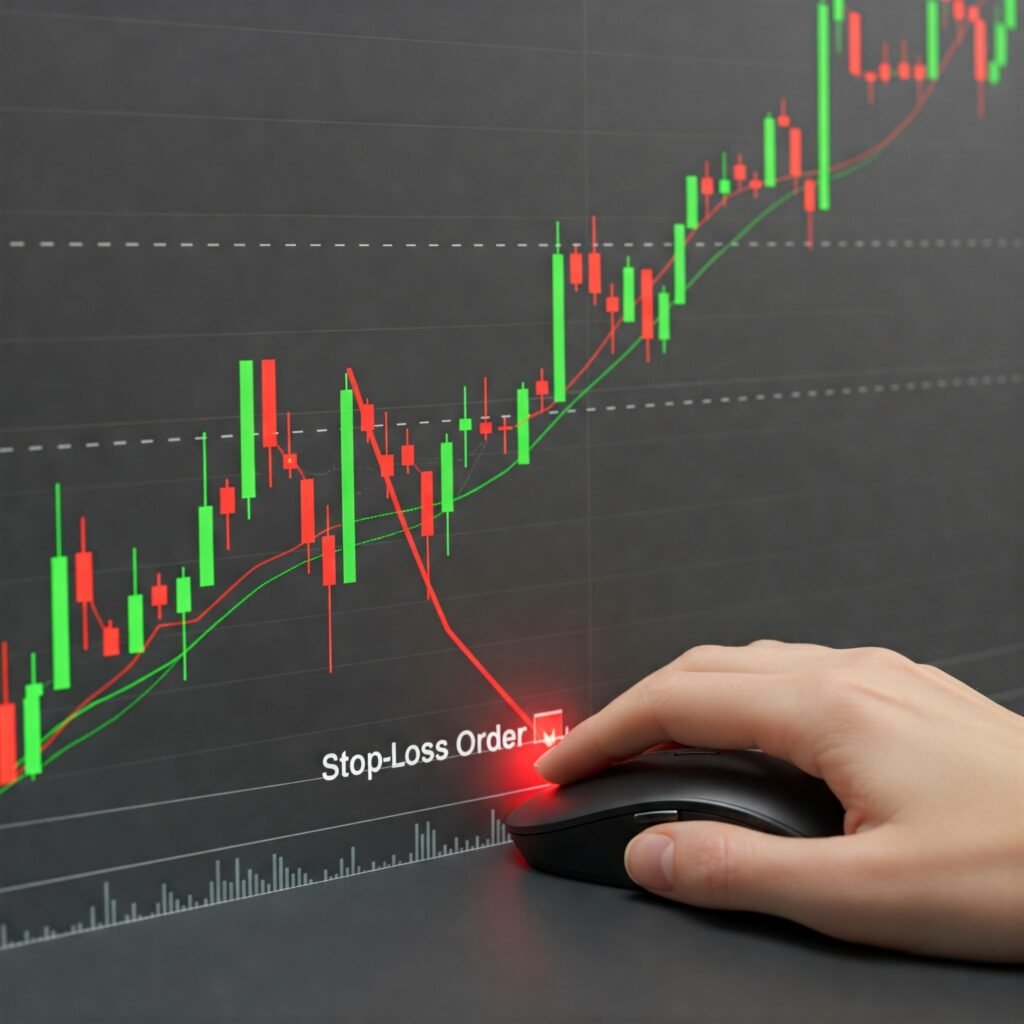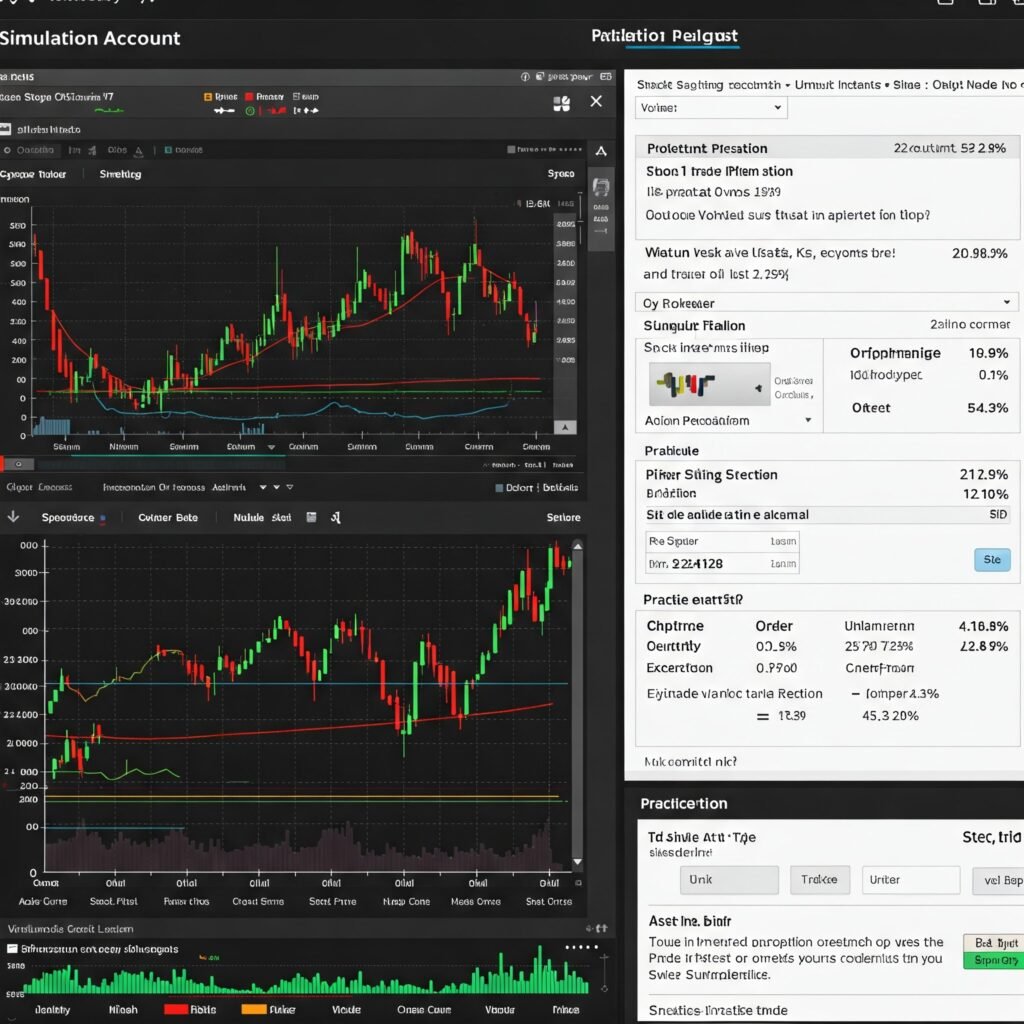The allure of day trading is powerful: the potential for quick profits, the excitement of the market, the idea of being your own boss. But let’s be real – the stories of people “losing their shirt” are just as common. If you’re exploring day trading for beginners, the thought of substantial losses can be terrifying. The good news? While inherently risky, it is possible to start your day trading journey without risking your entire savings. It requires preparation, discipline, and a realistic approach. This guide will walk you through the essential steps to begin day trading for beginners while prioritizing capital protection.
Why “Day Trading for Beginners” is Risky (and Why Many Lose Money)
Before we talk about how to start safely, it’s crucial to understand why day trading has such a high failure rate, especially for those new to it. Ignoring these risks is the fastest way to, well, lose your shirt.
The Allure vs. The Reality for Day Trading Beginners
Social media and online gurus often paint a picture of effortless wealth through day trading. They show fancy cars and luxurious lifestyles, implying anyone can jump in and make a fortune quickly. The reality is that successful day trading is a demanding profession that requires skill, knowledge, and psychological fortitude. It’s not a get-rich-quick scheme.
Common Pitfalls for New Day Traders
- Lack of Education: Jumping in without understanding market mechanics, terminology, or how to read charts.
- Under-capitalization: Starting with too little money, making it difficult to withstand inevitable losses and leading to frustration.
- No Trading Strategy: Trading based on gut feeling, tips, or hope rather than a defined plan.
- Poor Risk Management: Not using stop-losses, risking too much capital on a single trade, or overleveraging.
- Emotional Trading: Letting fear (panic selling) or greed (holding onto losers too long, taking profits too early) dictate decisions.
- Overtrading: Feeling the need to be constantly in the market, leading to unnecessary commissions and poor decisions.
Understanding these pitfalls is the first step in avoiding them as you embark on day trading for beginners.
Essential Steps for “Day Trading for Beginners” Without Losing Your Shirt
Okay, so you know the risks. Now, how do you mitigate them and increase your chances of survival and eventual success? It comes down to a structured, disciplined approach.
Step 1: Education is Non-Negotiable for Day Trading Beginners
Think of it like becoming a pilot. You wouldn’t fly a plane after watching a few YouTube videos, would you? Day trading requires similar dedication to learning.
- Learn the Basics: Understand what drives markets (supply/demand, news, economic data), different order types (market, limit, stop), and basic chart patterns.
- Study Market Structure: Learn about support and resistance levels, trends, and volatility.
- Explore Different Instruments: Stocks, Forex, Futures, Options – they all trade differently. Understand the pros and cons of each for your beginner journey.
- Recommended Resources: Look for reputable books, online courses (be wary of overly hyped ones), and educational websites from established financial institutions.
- [Link to a reputable financial education website/resource]
Step 2: Start Small and Manage Your Capital Wisely
This is perhaps the most critical step to avoid losing your shirt.
- Only Risk Capital You Can Afford to Lose: Seriously. This money should not be your rent, mortgage, or grocery money.
- Understand Minimum Capital Requirements: The Pattern Day Trader (PDT) rule in the U.S., for example, requires $25,000 equity for margin day trading stocks. However, you can start with less in other markets (like Forex) or by trading other instruments, but it’s still advisable to have a buffer.
- Start with a Tiny Portion of Your Capital Per Trade: A common rule is to risk no more than 1-2% of your total trading capital on a single trade. If you have a $10,000 account, this means risking only $100-$200 per trade. This allows you to survive a string of losing trades, which will happen.

Step 3: Develop and Test Your Day Trading Strategy
Trading without a strategy is gambling. A strategy is your rulebook for when to enter a trade, when to exit a winning trade, and when to exit a losing trade.
- Choose a Strategy Type: Focus on one or two types initially, like trend following, range trading, or breakout strategies.
- Define Your Entry and Exit Rules: Be precise. What specific conditions need to be met to enter? At what price will you take profits? At what price will you cut your loss?
- Backtest Your Strategy: Use historical data to see how your strategy would have performed.
- Forward Test (Paper Trading): Test your strategy in real-time using simulated money before risking actual capital.
Step 4: Risk Management: Your Shield as a Beginner Day Trader
This is the cornerstone of not losing your shirt. Risk management isn’t about making money; it’s about preserving it.
- Always Use Stop-Loss Orders: This is non-negotiable. A stop-loss is an order placed with your broker to automatically close a trade if it moves against you by a predetermined amount. This limits your potential loss on any single trade.
- Calculate Your Position Size: Based on your stop-loss distance and your 1-2% risk rule, calculate how many shares, contracts, or lots you can trade.
- Understand Risk/Reward Ratios: Aim for trades where your potential profit is significantly larger than your potential loss (e.g., aiming for a 2:1 or 3:1 risk/reward ratio).

Step 5: Master Your Emotions (Crucial for Day Trading Beginners)
Fear and greed are the enemies of a day trader. They lead to impulsive decisions that deviate from your carefully planned strategy.
- Stick to Your Plan: Once a trade is on, trust your strategy and risk management rules. Don’t move your stop-loss further away in the hope the market will turn.
- Avoid Revenge Trading: Don’t immediately jump into another trade after a loss just to make your money back. Step away, review what happened, and wait for your next valid setup.
- Keep a Trading Journal: Document every trade – the setup, your reasoning, entry/exit points, and your emotional state. This helps you learn from mistakes and identify emotional patterns.
Step 6: Practice, Practice, Practice (Simulators for Beginners)
You wouldn’t perform surgery without practicing on a dummy, right? Trading simulators (paper trading accounts) allow you to practice your strategy in a risk-free environment using live market data.
- Treat Simulation Seriously: Don’t take unrealistic risks just because it’s not real money. Practice following your rules precisely.
- Test Different Market Conditions: See how your strategy performs in trending vs. choppy markets.
- Gain Familiarity with Your Platform: Learn how to place orders quickly and efficiently.
- [Link to a review or list of good trading simulators]

Step 7: Choose the Right Tools and Broker
Your trading platform and broker are your interface with the market.
- Reliable Platform: Look for a stable platform with good charting tools, fast execution, and access to the data you need.
- Reputable Broker: Choose a well-regulated broker with transparent fees, reliable customer support, and access to the markets you want to trade.
- Understand Fees: Commissions, spreads, and data fees can eat into profits quickly, especially for frequent day trading.
Putting it Together: Your Action Plan for “Day Trading for Beginners”
Ready to start your journey? Here’s a summary of actionable steps to take to begin day trading without losing your shirt:
- Commit to Education: Spend weeks or months learning the fundamentals before risking a dime.
- Define Your Capital: Determine the exact amount of money you are willing and able to lose without impacting your life. Start trading with only a small percentage of this.
- Develop Your Strategy: Choose a market, instrument, and strategy type. Write down specific rules for entry, exit, and stop-losses.
- Paper Trade Extensively: Practice your strategy in a simulator for at least a few months until you consistently follow your rules and see potential profitability (remembering sim results don’t always equal live).
- Start with Tiny Positions: When you transition to live trading, use the absolute minimum position size allowed to test your strategy and emotions with real money pressure. Adhere strictly to your 1-2% risk per trade rule.
- Maintain Your Journal: Continuously track trades and emotional states.
- Review and Adapt: Regularly analyze your trading journal to identify what’s working and what’s not. Be prepared to adjust your strategy based on data, not emotion.
Conclusion
Embarking on day trading for beginners is a challenging but potentially rewarding endeavor. The path is littered with risks, but by prioritizing education, starting small, developing a robust strategy, mastering risk management, controlling your emotions, and practicing diligently, you significantly increase your chances of success and, more importantly, avoid the devastating mistake of losing your shirt. Approach day trading like a marathon, not a sprint, and focus on consistent learning and capital preservation.





